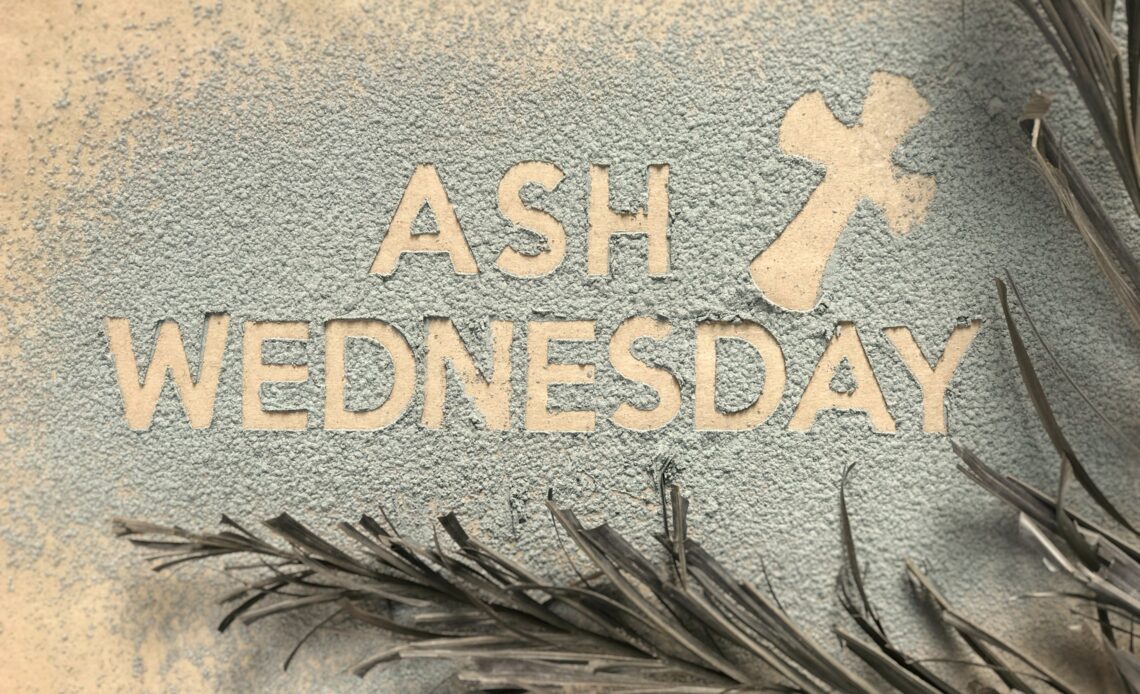46 days before Easter, it is not uncommon to see Christians, especially those of the Catholic faith with a cross made of ashes on their forehead. While this can be confusing to some, the celebration of Ash Wednesday dates back to the 11th century. For centuries, Christians have taken this opportunity to begin the Lent season with a time of personal reflection and repentance, which is typically displayed with an ashen cross on their foreheads. Ash Wednesday church services may vary from one congregation to the next, but the meaning and the origins of this religious holiday transcend denominational barriers as Christians prepare themselves to celebrate the crucifixion and resurrection of Jesus Christ.
Is Ash Wednesday in the Bible?
No, there is not a Bible verse that explicitly states that Christians are to celebrate Ash Wednesday. However, that does not mean that Christians should avoid celebrating Ash Wednesday. While there are some denominations that do not typically participate, there is no Bible verse that forbids participation. In the same vein that there is no Bible verse that mandates or forbids a Christians from celebrating Christmas on December 25, there is no such verse that discusses Ash Wednesday celebrations.
How Does Ash Wednesday Work?
While the specific practices of an Ash Wednesday service may vary between congregations, the typical Ash Wednesday service components are typically the same across the board. Most Ash Wednesday services include a message from the Priest or Pastor of the church that causes the congregants to reflect on their own lives. It is not uncommon for these services to be very solemn in nature, including long periods of silence as members of the congregation spend time in thoughtful reflection.
At or near the end of the service, the minister who is leading it will allow for any congregants who want to participate to come to the front of the sanctuary. The minister will then rub ashes on his or her finger before creating the shape of a cross on each participating member’s forehead. These crosses serve a dual meaning. First of all, they indicate to others that the person bearing the cross has committed their lives to Christ and is participating in a time of reflection surrounding His death, burial and resurrection. It is not uncommon for the minister to quote the scripture that says, “from dust you came and to dust you shall return” (Gen 3:19).
The use of this verse causes each person to take careful inventory of their own lives in a moment that reminds them that this life is temporary and our eternity has been paid for through the shed blood of Jesus Christ. The presence of the ashes also reminds the congregant to look inside themselves each time they see their own reflection.
The ashes that are used during Ash Wednesday services are typically prepared from the palm branches that participating churches use during their Palm Sunday services. Palm Sunday is the time of remembrance for Jesus’ triumphant entry into town before his arrest and crucifixion found in Matthew 21:1-9. Between Sunday and Wednesday, many churches burn these palm leaves and then use the ashes in their Ash Wednesday services.
Why Ashes?
Ashes are commonly referred to as a sign of mourning in the Old Testament. One such as example is found in the book of Esther:
Esther 4:1 (ESV)
When Mordecai learned all that had been done, Mordecai tore his clothes and put on sackcloth and ashes and went out into the midst of the city, and he cried out with a loud and bitter cry.
Additionally, ashes are used during a time of repentance as seen in the book of Daniel:
Daniel 9:3 (ESV)
Then I turned my face to the Lord God, seeking him by prayer and please for mercy with fasting and sackcloth and ashes.
Finally, ashes are a sign of humility:
Genesis 18:27 (ESV)
Abraham answered and said, “Behold, I have undertaken to speak to the Lord, I who am bust dust and ashes.”
Ash Wednesday is a time that Christians accept these feelings and allow God to minister directly to them through those feelings. The cross, which was the ultimate sacrifice for our sins, forces us to accept our own shortcomings. Our sin can lead to feelings of mourning, humility and the need for repentance. The presence of the ashes is symbolic of our own sin and our need for Divine Salvation.
Why Do We Celebrate Ash Wednesday?
Ash Wednesday is an annual reminder of our own shortcomings in comparison to the sinless, holy Son of God. Ultimately, our sins had separated us from God and the only way to get us back into right relationship with Him was for Him to offer His Son as the sacrifice for our sins (John 3:16). Ash Wednesday, which takes place near the beginning of the Lent season forces us to carefully examine our own lives. Once we are reminded of our own sinful nature and realize that Jesus paid the debt for those sins on Calvary’s cross, those feelings of mourning, humility and repentance are replaced with a thankfulness that the Only Begotten Son of God paid a debt He did not owe because we owed a debt we could never pay.
A Closing Prayer:
God, as we begin to enter this season of Lent and observe Ash Wednesday, I ask that You help me to carefully examine myself. Help me to identify things in my life that could separate me from You. Thank You, Lord for paying the ultimate price for my sins. Help me to be constantly mindful of the price that You paid so I can walk in the fullness of Your forgiveness and mercy. Thank You for loving me, thank You for saving me and thank You for keeping me. In the name of Jesus Christ I pray, Amen!


